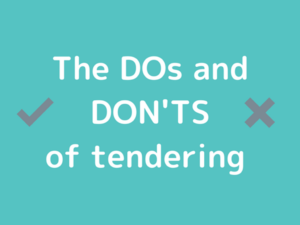
By Kate Burrows, Managing Director, Tender Training College
The lack of client feedback on tenders is a constant challenge for businesses bidding for work.
Why did your company lose? What could it have done differently or better?
Often the silence after submitting a tender can be deafening, given the hard work that goes into responding and the stakes at hand.
Even if your company isn’t the successful proponent, it would be good to know where it went wrong.
According to according to the Federal Government, which awards around 60,000 contracts annually, there are commonly avoidable mistakes all bidders make.
It released its dos and don’ts of tendering* to help tenderers avoid some of the mistakes that may impact on their success.
The dos of tendering are:
- Prepare responses against the evaluation criteria and address all elements of each criterion
- Seek to understand the mandatory requirements and terms and conditions
- Demonstrate your organisation’s ability to provide the required services and provide factual and focused responses using examples
- Provide sufficient detail on any assumptions being made
- Quantify and qualify responses, eg:
- ‘up to 24 hours’ – this could actually be only five minutes
- ‘we will save you 50%’ – of what, when and how
- Ask questions if unsure of the meaning of something, ask the tender team for clarification. They are there to help
- Leave sufficient time to lodge your bid on AusTender.
The don’ts include:
- Assume that the tender evaluation team knows about your organisation and its capabilities – this is particularly relevant to incumbent suppliers. Tender teams can only evaluate what is submitted in written responses and obtained through verification activities
- Submit broad, vague or repetitious statements, or irrelevant marketing information
- Cut and paste information from previous tender responses without checking if the information is relevant to the current tender
- Assume there will be a second opportunity to provide pricing -submit the best offer the first time.
I recommend keeping the dos and don’ts handy as a checklist when preparing your next tender.
Alternatively, we can provide a review of your next draft tender against these key criteria. Find out more here: https://tendertrainingcollege.com.au/review-my-tender-online/
*https://www.finance.gov.au/blog/2016/02/11/common-mistakes-in-tender-response


